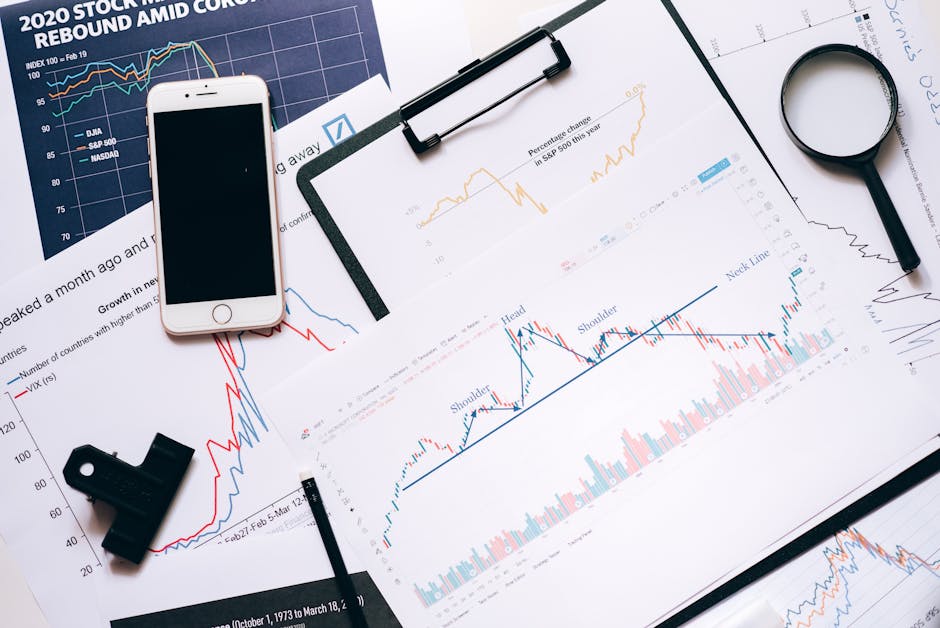
In 2025, the financial landscape is marked by significant fluctuations within the stock market, particularly reflected in the declines of major indices such as the Dow Jones Industrial Average, S&P 500, and Nasdaq Composite. For international investors residing in the United States and Europe, understanding the intricacies of these market movements is crucial for making informed investment decisions amidst uncertainty.
Understanding Stock Market Volatility in 2025
The first half of 2025 has seen significant volatility in the stock markets, with the Dow, S&P 500, and Nasdaq all experiencing sharp declines. These fluctuations are driven by a complex mix of economic indicators, geopolitical tensions, and evolving market dynamics. Investors around the world are closely watching these indices as they navigate this challenging environment.
Key Drivers of Market Volatility
Several factors contribute to the current market volatility:
- Economic Uncertainty: Global economic conditions remain unstable, with varying growth patterns observed across different regions. Inflation rates, interest rate hikes, and fiscal policies in major economies like the U.S. and EU are impacting markets significantly.
- Geopolitical Tensions: Ongoing geopolitical tensions, including trade disputes and regional conflicts, add layers of unpredictability to the financial markets.
- Technological Shifts: Rapid advancements in technology and their integration into business processes are altering market dynamics, occasionally leading to rapid market re-evaluations.
- Corporate Earnings: The performance of key corporations and their earnings reports continue to influence market sentiment, often causing fluctuations in stock prices.
Navigating the Dow, S&P 500, and Nasdaq Declines
For investors, understanding how to navigate the downturns in the Dow, S&P 500, and Nasdaq requires a strategic approach. Here are some strategies to consider:
- Diversify Your Portfolio: Diversification remains a fundamental strategy to mitigate risks. By investing across various asset classes and sectors, investors can spread out risk and reduce exposure to any single market downturn.
- Focus on Quality Stocks: Opting for stocks with strong fundamentals, such as solid financial health, effective management, and consistent earnings, can provide a buffer against volatility.
- Stay Informed: Keeping abreast of market news, economic indicators, and geopolitical developments is vital for making educated investment choices.
- Consider Safe-Haven Assets: In times of volatility, traditional safe-haven assets such as gold and government bonds can offer some degree of protection against market downturns.
- Long-Term Perspective: Adopting a long-term investment perspective can help investors ride out short-term volatilities while benefiting from potential market recoveries over time.
The Role of Economic Indicators
Economic indicators play a vital role in influencing stock market trends. Investors should pay close attention to:
- Inflation Rates: High inflation can erode purchasing power and impact corporate profitability, influencing stock prices.
- Interest Rates: Changes in interest rates by central banks affect borrowing costs and consumer spending, which in turn, impact market dynamics.
- Employment Data: Employment rates are crucial indicators of economic health and consumer spending capabilities, affecting investor sentiment.
Impact on International Investors
For international investors in the U.S. and Europe, currency fluctuations add another layer of complexity to investing in these volatile markets. The exchange rate can significantly impact returns, especially for those investing cross-border. Therefore, staying informed about currency trends is essential.
FAQ
What causes stock market volatility?
Stock market volatility can be caused by various factors including economic data releases, geopolitical events, corporate earnings announcements, and changes in monetary policy.
How can investors protect their portfolios during market declines?
Investors can protect their portfolios by diversifying their investments, focusing on quality stocks, and allocating some assets to safe-haven investments like gold and bonds.
Why are the Dow, S&P 500, and Nasdaq important?
The Dow, S&P 500, and Nasdaq are important because they represent broad measures of the U.S. stock market performance and are widely followed indicators of the financial market health.
How does inflation affect stock markets?
Inflation affects stock markets by impacting consumer purchasing power and corporate profit margins. High inflation can lead to increased interest rates, which may negatively affect stock prices.
Should international investors be concerned about currency risks?
Yes, international investors should consider currency risks as exchange rate fluctuations can affect the value of their investments and returns when converting back to their home currency.
Conclusion
As of August 2025, stock market volatility poses significant challenges for investors across the globe. By understanding the underlying factors driving this volatility and employing strategies such as diversification, informed decision-making, and a long-term investment perspective, investors can navigate these uncertain times more effectively. Remaining vigilant and adaptable will be key to managing investments amidst the ongoing fluctuations of the Dow, S&P 500, and Nasdaq.


